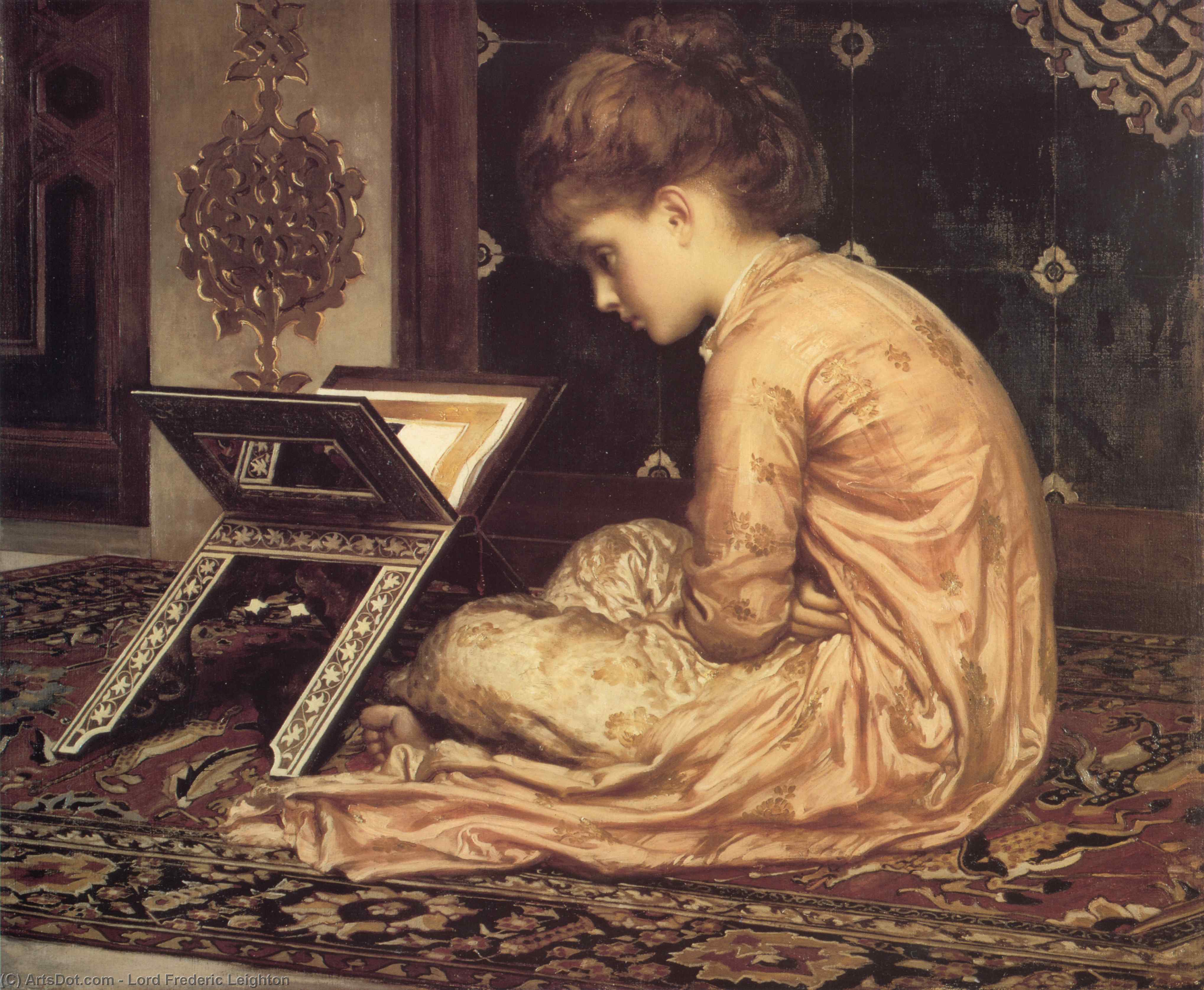If interested in a personal liturgy, please consult this portal.
Venus crosses today from the fixed fire of Leo into the mutable earth of Virgo. The ancients placed the sixth house under the name of Misfortune, of labour, illness and service. Venus enters here in her fall, as beauty is pressed into detail and desire into discipline. But Virgo is nevertheless a feminine and nocturnal sign, a vessel of reception; it is also a place where Venus holds a share in the diurnal triplicity of earth, and so she is not banished entirely. This descent is a purification, a toil in which love is compelled to take the form of the humble gesture, the silent work, the grain sorted one by one until the heart can be offered whole.
This passage occurs just one day after Mercury has left Virgo, his own house, and entered Libra. The two planets closest to the Sun are now exchanging their regencies and binding each other in mutual reception. It is the ancient androgyny, Hermes and Aphrodite, fused into one current, Rebis, the child of Word and desire, winged intelligence clothed in the body of grace. Mercury leaves his seat, while Venus enters her fall, and the result is a knot of meanings where speech and love reflect each other in living mirror. This is a time when the written word, the poetic phrasing, the balanced dialogue can become the very incarnation of Venus.
The transit begins under the shock of a square to Uranus, retrograde in Gemini, also under Mercury’s lordship. Both Venus and Uranus stand in the bounds of Mercury, so the thread of the Hermetic planet holds the key. Love in its descent collides with the lightning of sudden change; beauty meets the urge for rupture. The tension will not dissolve easily, but the scales of Mercury in Libra can offer harmony if the word is spoken with equilibrium. What first trembles as fracture may be resolved through the tongue, through reason, through the delicate architecture of the phrase.
Her curse through Virgo is a procession of trial. She will oppose the North Node and Saturn retrograde in the last degrees of Pisces, the region of the Cacodaimon, where the heaviness of fate and the long burden of time stand guard. Love must face memory, necessity and the shadows of karma. These are purgations where humility is required. Later she will reach the doorway of Libra and immediately confront Neptune retrograde in Aries, a dissolving veil cast across between the Ascendant and Descendant; this is the test of discernment, when the image of love may vanish into fog or be transfigured into vision.
But there is balm: a sextile to Jupiter in the Nadir Cancer brings relief. In the depths of maternal waters, the great benefic offers abundance and tenderness. The home, the lineage, the ancestral table become the ground where Venus can be nourished.
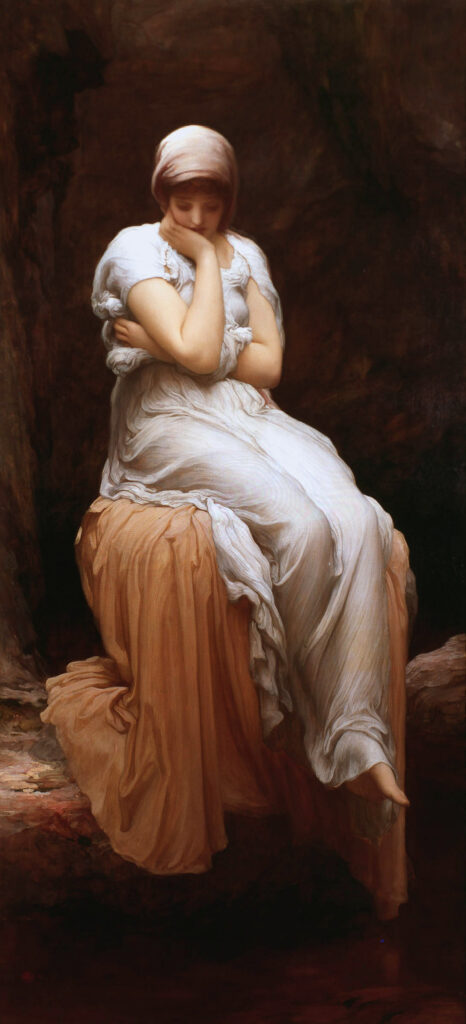
The sixth house is also charged with an unusual weight right now. At the very moment Venus crosses into Virgo she does so sealed by an exact conjunction with the Moon at the first degree. These are the two feminine planets of the nocturnal sect, their meeting binding the ingress with a hidden pact. The Moon still carries the scar of the total eclipse in Pisces, wounded and balsamic, preparing now for a second death and rebirth in the same house. This seal marks the whole passage; the descent of Venus into labour and service is stamped with lunar shadow, and the arc of love is bound to the rhythm of two consecutive new moons rising from the same soil.
The second will in two days carry the wound of an eclipse as the Sun approaches the Cauda Draconis, in saturnine bound. Altough Venus and the Sun will briefly occupy opposite ends of Virgo, and so the goddess escapes combustion, the king of day moves quickly into Libra already weakened, eclipsed, and bound to enter his sign of fall at the equinox. He too will come then under the regency of Aphrodite in the weeks to follow, joining Mercury.
This is an inversion of order. The Sun, the very image of the Logos, is eclipsed and fragile, descending into his fall; Venus is also in her fall, the servant in Virgo, the one who says “Behold the handmaid of the Lord“. Both are stripped of their natural majesty. But, in this common abasement, the the crown is concealed; the servant receives command in disguise, as the fallen Queen holds hidden regency. When the king is bleeding and the bride is humbled, the mystery of reversal unfolds.
The Virgoan entrance is also the beginning of a greater arc, the initiatory process of Venus traced upon the very pillars of the Temple of Solomon. In Virgo, she descends upon the left column, the side of severity, where her radiance is humbled and sifted through labour, detail and imperfection. It is the first stage, when love is purified through service and the splendour of the goddess is laid down in the soil.
From the sixth house she will then rise into her rulership in Libra, the Descendant, standing in the atrium, crowned in equilibrium and harmony. For a moment she is restored, exalted at the centre in a cardinal house, bearing the twelve-star diadem of justice and proportion. But this process always demands the passage further; she is drawn next to the right column in Scorpio, where her exile binds her to the cups of passion and death, where desire ferments and the chalice is filled with bitter wine.
The whole cycle leads toward the Morning Setting in late November, when she will sink beneath the horizon in the fixed water of symbolic death, before being made new. When we contemplate her now, we see the path unveiled: a drama of descent, crowning and crucifixion, the triple movement of Venus through severity, balance and dissolution. The love that serves, the love that reigns, the love that dies, all bound to the Word through Mercury.
Venus is also entering Virgo on a Friday, the day consecrated to her, the day ruled by Archangel Haniel who commands the choir of Principalities in Netzach. The ingress itself takes place under the solar hour, uniting the power of the Sun with the rite of the goddess. The liturgy took place under incense of rose, after reading the first chapter of the Apocrypha of the Nativity.
I. North – What Roots Sustain the Fall and Labour of Venus in Virgo?
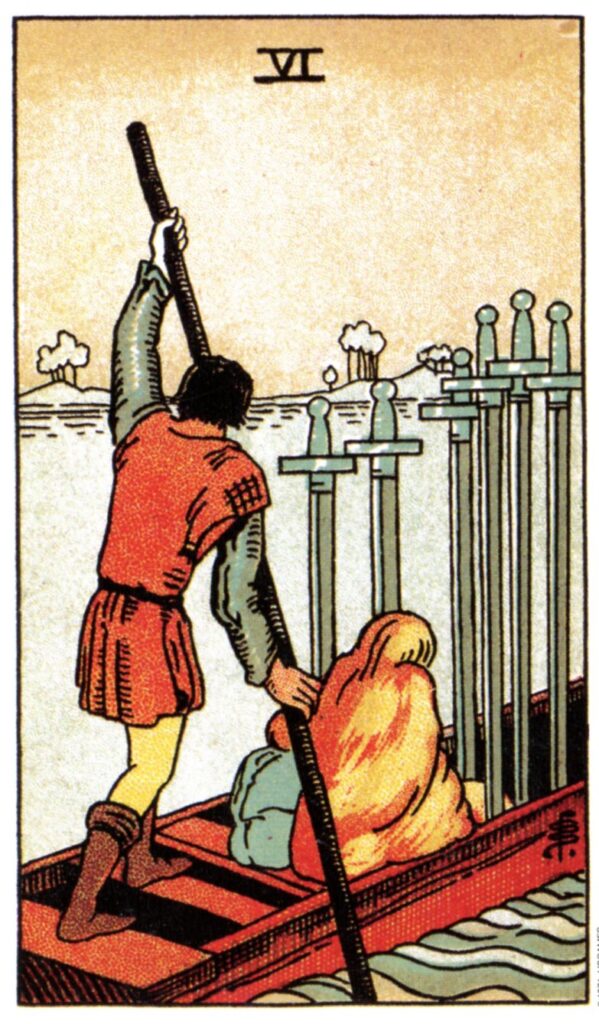
The Six of Swords rises at the northern root, the car of Tifereth in Yetzirah. It is the beauty of the Sun refracted through the plane of formation, the mind that carries clarity across troubled waters. The root of the current sky lies in passage; the Spirit is moving with this transit and the sword of intelligence carves a path where the river seemed closed.
Venus entering Virgo bends to service; she enters the house of labour and detail, and the root shows that, even in abasement, there is order guiding the way. The root is discipline of thought, the purification of mind that allows the Spirit to cross into new ground. Without this order of swords, the labour of Virgo would descend into futility of the Seven of Swords. With it, the fall becomes a bridge, and the root sustains the journey with hidden symmetry.
II. South – What Spiritual Work is Demanded Under This Trial?
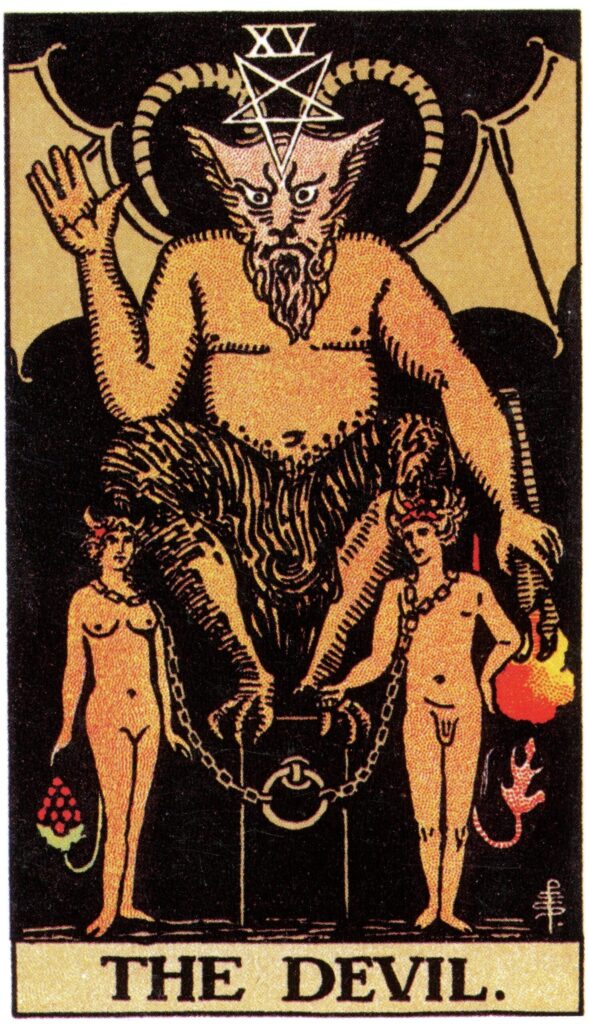
At the southern crown stands the Devil, the arcanum of Ayin, the path that joins Hod to Tifereth. It is the bond of desire and the Eye that pierces the mask. The Spirit is demanded to endure the weight of illusion and to face the glamour that veils the Logos.
Venus in her fall is chained to service, but the card reveals that this very chain can become Sacrament; the bond that holds is also the bond that purifies. The work is not to flee but to look through, to gaze until the veil thins and to understand that even the Devil is a mask of the Logos. Archangel Michael stands at the centre, sword in hand, the one of fire and severity, cutting the knots that seem unbreakable.
The trial demanded is vision through the eye of Ayin, the recognition that what enslaves may be transfigured into passage. The South crowns the reading with the burning demand to meet the villified Arcanum as yet another guardian to be crossed. Through this confrontation, the servant is prepared for her crown.
III. West – What Reflection Appears As the Other As An Instance of Labor?
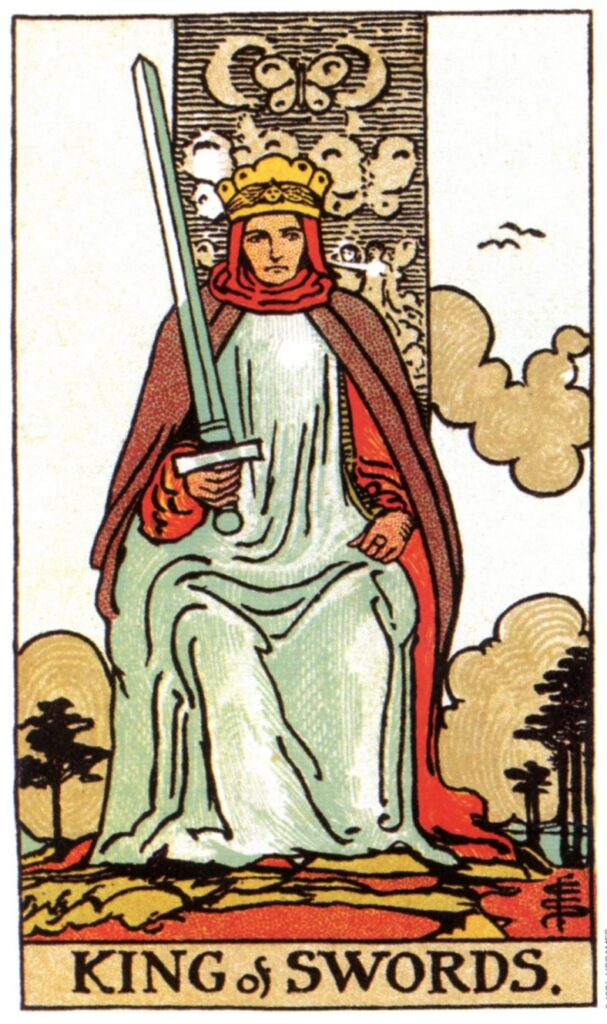
At the western gate stands the King of Swords, the archetype of Air in Atziluth. This is the Other as mirror; the reflection offered is the highest form of intellect, regal and unbending. In the realm of Venus in Virgo, where service humbles beauty, the mirror of the Other is assertive and inquisitive; it presents the sword of Logos in its purest plane.
The King of Swords is authority in speech, the discernment that allows no confusion. The West shows, once more in this liturgy, the realm of Air, and Air belongs to the world of Yetzirah, the angelic plane of formation. The mirror of the Other therefore speaks in the language of angels; it is a current that cuts and clarifies.
In this reflection the Spirit is tested, since the mirror is exact. The labour of love in Virgo must face the reflection of the Word in its archetypal authority; the Other becomes the pure breath of Logos, and the Spirit is liberated by recognising itself in that stern light.
IV. East – What Form the Spirit Assumes in Body and Presence During This Transit?
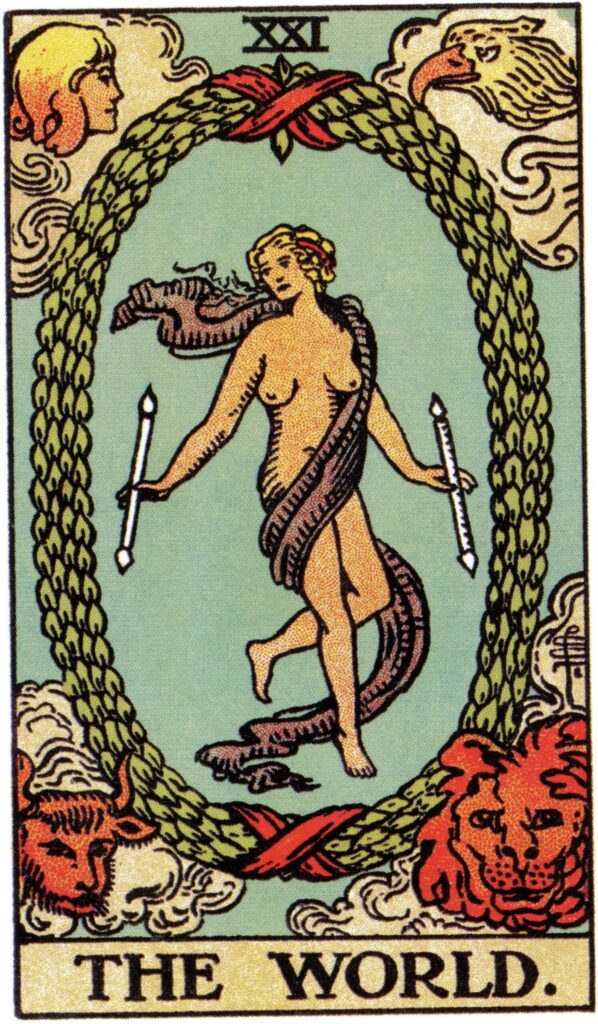
At the East, the World reveals that the Spirit assumes form in totality, never in fragment. Liberation here points to embodiment; Spirit engraves itself into the flesh and the body becomes a living Cross. The arcanum stands on the path of Tau, the line that joins Malkuth with Yesod. At the earthly root, Sandalphon gathers the prayers of the body, the cry of the earth, the labour of Virgo where love descends into service. At the crown of the path, Gabriel receives those prayers in the lunar sphere and reflects them as vision. Between earth and Moon the Spirit takes form, weaving incarnation.
The Tau Cross is the seal of completion; it reconciles the four elements and sets the four living creatures at the edges of creation. Liberation in this direction means the Spirit crowned in matter, the Word carried in gesture, the Logos mirrored in every limb. When we look at this form, we recognise the whole in the smallest act, to see the cosmos inscribed in the servant’s labour.
In the East, the reading answers with clarity: the Spirit is released as world itself, clothed in wholeness. The descent of Venus into Virgo prepares this embodiment, as she humbles beauty into service so that love may be crowned in flesh. The Spirit assumes the form of the Tau, where beginning and end meet as one, and the coronation of love shines through the very body of creation.
Κύριε ελέησον
